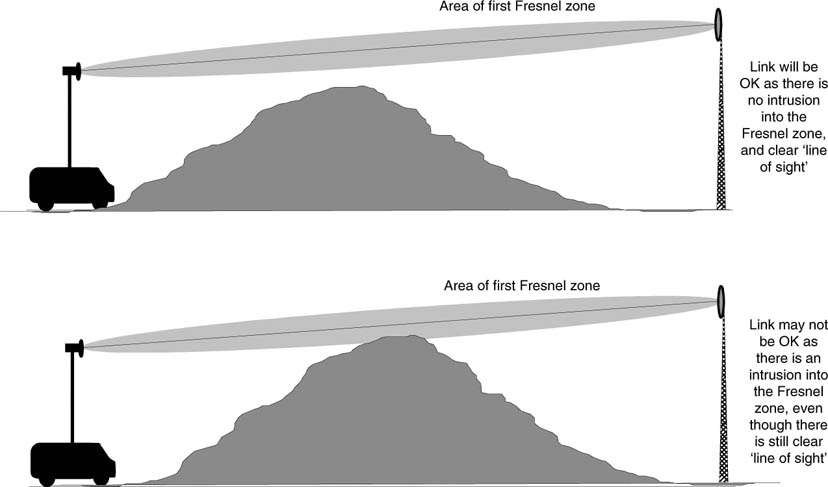Fresnel zones
Water, in the form of humid air, fog or rain absorbs microwave energy and can disrupt transmissions. At the middle point between a transmitter and a receiver, the beam can spread in diameter up to tens of metres and this area, known as the Fresnel zone, must be completely clear of obstructions such as trees, buildings, or any area of ground such as hills. Fresnel zones are all about ‘reflections’.
Fresnel zones

The mathematical theory surrounding Fresnel zones is very complex, and so we need to concern ourselves only with the area described as the first Fresnel zone. There should not be any obstruction within this area, as it is ...
Get Introduction to SNG and ENG Microwave now with the O’Reilly learning platform.
O’Reilly members experience books, live events, courses curated by job role, and more from O’Reilly and nearly 200 top publishers.

